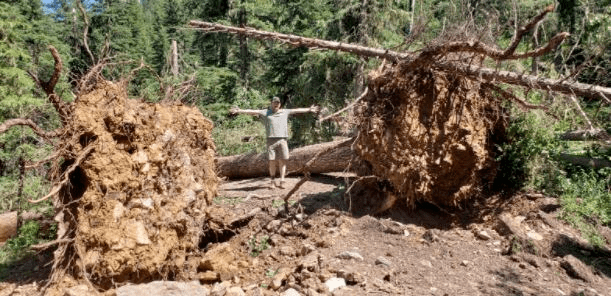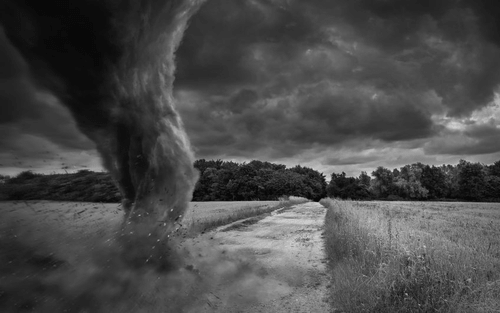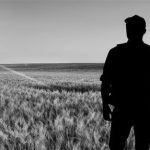Hey folks, today’s blog is not going to be presented in the same fashion or over the same materials as our previous blogs on estate planning. If you want to know the effects of a proper estate plan, check out this blog about Luke Perry’s estate planning. Go here if you want to learn about transfer on death deeds. For general estate planning questions, check out Part 1 and Part 2. Today, this blog will go through my experience in surviving a tornado and explain why estate planning can be so important. This is a longer blog article, but may perhaps be more captivating than some other estate planning blogs.
I was in the Black Hills in South Dakota in about the middle of July this year. If you have never been, I highly recommend you get out to the Black Hills and take in all the untapped beauty that the place has to offer. The Black Hills is an interesting place for a variety of reasons, not the least of which is its weather. Due to its relatively high elevation for the area and other sciency things, the Black Hills has very quick forming storms and moving weather. It is commonplace to see completely clear skies one minute and to experience torrential downpours a half-hour later. The latter is where I found myself for this story.
I was hiking to a waterfall that used to have a 4 wheeler trail to it. However, the trail had been restricted to walking traffic only. As a result, I knew my group (my wife, two individuals who have not spent much time in the Black Hills, and myself) would have this trail, and the waterfall at the end of it, to ourselves. The hike in was a meek one mile, and one of the flattest trails you can have in the Black Hills. Once we arrived at the overlook of the waterfall, one of our hikers pulled out his phone to check the weather radar. (Tip 1: check your radar before you go on the hike.) The weather radar indicated a warning for a severe thunderstorm capable of producing baseball-sized hail was in effect for our county, but the weather radar indicated the storm would miss our location by quite a bit. (Tip 2: Don’t ever ever ever trust the weather radar in the Black Hills.) We decided to climb down to the waterfall, but would watch the weather (“watch” just means look up and see if the sky is on fire yet). We headed down a short rock face stitched together with tree roots we could use as handholds and made it to the bottom. We were down at the waterfall for almost 3 minutes before we realized it was time to get out of this gorge and to get back to our side-by-sides parked at the beginning of the trail. We made it up the gorge and were back on the hiking trail. This is where things got a little more intense.
We were about a half-mile from the side-by-sides when the rain dropped out of the sky. At this point, having just been in a thunderstorm the day before in the Black Hills, I was thinking we were going to get wet and that would be it (getting caught in rainstorms happens all the time in the Black Hills). Unfortunately, about 30 seconds later quarter-sized hail graced us with its presence. At this point, I was looking for a cover for the four of us. The hail was luckily pretty soft, but that could really change at any moment. I, however, was having a hard time finding a tree big enough to protect us from the hail that wasn’t already dead and ready to fall over should the wind pick up. At this time we were about a quarter-mile from the side-by-sides.
Suddenly, we heard this roar coming from behind us. It was so loud and so unexpected that I truly forgot I was getting pelted with hail for a second. We all stopped for a brief second to get our bearings and figure out what this noise was. Almost as soon as we stopped we saw all the trees around us bending at close to 90-degree angles. The roar was the wind from the storm front we were warned about some 20 minutes earlier. No sooner had the roar hit us that trees started falling around us. Now, I consider myself fairly well versed in outdoor activities and survival (although I clearly ignored some protocol here). However, there are no tips/tactics for surviving a storm when you need to seek shelter, the only thing around is trees, and those same trees are either breaking or being ripped out by their roots and thrown to the ground. (Tip 3: If you are caught in the open of a tornado, you are supposed to seek shelter or lay flat on the ground and cover your head. If all the “shelter” is being uprooted, you really need to make a judgment call.) Our unanimous undiscussed decision was to run as fast as we could.
The four of us took off towards the side-by-sides (still roughly a ¼ mile away – fastest recorded 400-yard dash is just over 43 seconds). The four of us are sprinting to the side-by-sides when the trees around us really start to let go. As I am running, I see tree after tree snap and fall or get pulled out of the ground and fall into other trees, bringing more and more trees to the ground. (Tip 4: If you think there is even a remote chance you will need to sprint, please please please do not wear stiff mountain hiking boots – you will be slow.) As we were running, with me reliably bringing up the rear, I watched for trees to warn the rest of the group should one come down towards us. (The thought that I could see a tree falling and warn the rest of the group with instructions on which way to move prior to the tree hitting them is a little silly in hindsight, but I was trying.) As I am playing tree spotter, I witnessed a tree get ripped out and act like a rolling pin on the surrounding trees before taking itself and the trees around it to the ground. (This did cause me to cut the distance to the group in front of me.) We finally made it to the side-by-sides. I thought we were safe. Wrong!
The original roaring winds that ripped past us tore through the canyon in front of us and brought trees and power lines onto the road. For the first log on the road, I jumped out of the side-by-side and was able to move it off the road. For the remainder of the logs, we jumped or were able to sneak around. We eventually were able to take shelter at a restaurant a few miles down the road. Later that night, we made it back to our cabin. The same storm that was chasing us had hit the area we were staying in, houses and cars were crushed by trees, and pickups (especially blue ones that I own) received significant hail damage. Later that night we heard on the news that there was a confirmed tornado in the canyon we were hiking.
The next day, for closure’s sake and to make sure we weren’t collectively dreaming, we went back to where this story began. The overlook of the waterfall had full-grown trees on their sides and many more trees had fallen into the gorge where we were taking pictures 18 hours earlier. (Tip 5: If a storm is coming, do not be on the downhill side of trees and water runoff area if you can help it.) We ran across a power company on the hiking trail that was trying to clear some power lines. They indicated that between the waterfall and the end of the trail (approximately one mile), they had already removed 200 trees from the trail. (Tip 6: If you have experienced some level of trauma, it’s probably best to not attempt to relive that trauma the next day.) The same day we heard additional news that the tornado we experienced was the second tornado in that area in one week. (Prior to this event, I had never experienced a storm like this in the Black Hills.) The damage done to the Black Hills will show for a long time.
Now, all four of us were just fine (mentally perhaps a little shaken). But, this experience exemplifies a point. A well known, good looking, and athletic estate planning attorney once said “you only need an estate plan in place seconds before your death. But . . . you have no idea when your time will come.” Now, I am making somewhat light of a very serious situation. Know that I am making light because it is my story. It is not my intent to make light of someone becoming injured or losing someone due to a storm. Nonetheless, we have no way of knowing when our time will come, so preparedness is key. This means listening to weather warnings, wearing appropriate hiking gear, having contingencies in place, and have an estate plan ready to go. If you have any questions, please contact us!
*PHOTO – The author standing next to uprooted trees directly on the overlook to a waterfall.











